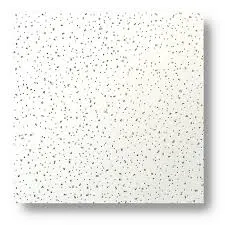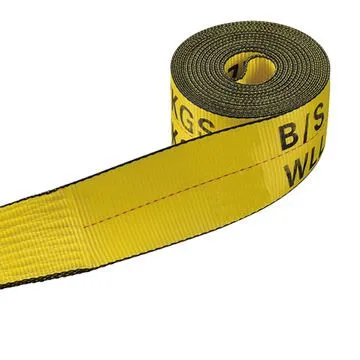Jan . 17, 2025 04:44 Back to list
ceiling t bar clips
Ceiling T-Bar Clips The Essential Guide to an Effective Installation
T-bar clips must be compatible with the grids and tiles used in a ceiling system. Industry standards have streamlined much of this process by creating standardized dimensions and tolerances. Installations that meet these criteria enjoy not only efficient assembly but also ease of maintenance, as standardized components are often interchangeable. This compatibility minimizes downtime and associated costs when modifications or repairs are needed. Impact on Acoustics and Insulation A well-executed suspended ceiling can also enhance the acoustics and energy efficiency of a space. T-bar clips contribute to this by ensuring tiles fit snugly, reducing sound transmission and maintaining a consistent insulation barrier. Soundproofing tiles, when paired with well-installed T-bar clips, can significantly minimize ambient noise, creating a more peaceful environment. Additionally, the fit and finish provided by precise clipping reduce gaps that could otherwise lead to thermal inefficiencies. Safety Regulations and Compliance Incorporating safety into suspended ceiling design is non-negotiable. T-bar clips must adhere to stringent safety regulations to ensure they can handle weight without failure. Compliance with standards set by organizations such as ASTM International ensures that the fittings are fire and load-tested, which is crucial for maintaining safe ceiling assemblies that protect building inhabitants. Sustainability Considerations Today’s environmentally conscious world calls for building solutions that minimize ecological footprints. Ceiling T-bar clips made from recyclable materials or produced by eco-friendly manufacturing processes are in demand. Aluminum clips, for instance, boast a highly recyclable nature. Sourcing clips from manufacturers committed to sustainable practices contributes positively to environmental conservation efforts and aligns with modern green building standards. The Role of Innovation The ceiling industry is witnessing a wave of innovation, with manufacturers exploring advanced materials and technologies to enhance T-bar clip functionality. Developments such as interlocking designs, which offer more stability under dynamic conditions like earthquakes, and smart clips equipped with sensors to monitor environmental changes, represent the future frontiers of suspended ceiling technology. Embracing these innovations can future-proof buildings, ensuring they remain at the cutting edge of safety and design. Conclusion Ceiling T-bar clips, though often overlooked, are a cornerstone of efficient, aesthetically pleasing, and reliable roof suspension systems. Selecting high-quality, compatible clips and following expert installation practices not only enhances the immediate space but ensures longevity and compliance with current and future architectural needs. As construction technology continues to evolve, staying informed about advancements in T-bar clip design and materials positions builders and designers at the forefront of this critical construction component.


T-bar clips must be compatible with the grids and tiles used in a ceiling system. Industry standards have streamlined much of this process by creating standardized dimensions and tolerances. Installations that meet these criteria enjoy not only efficient assembly but also ease of maintenance, as standardized components are often interchangeable. This compatibility minimizes downtime and associated costs when modifications or repairs are needed. Impact on Acoustics and Insulation A well-executed suspended ceiling can also enhance the acoustics and energy efficiency of a space. T-bar clips contribute to this by ensuring tiles fit snugly, reducing sound transmission and maintaining a consistent insulation barrier. Soundproofing tiles, when paired with well-installed T-bar clips, can significantly minimize ambient noise, creating a more peaceful environment. Additionally, the fit and finish provided by precise clipping reduce gaps that could otherwise lead to thermal inefficiencies. Safety Regulations and Compliance Incorporating safety into suspended ceiling design is non-negotiable. T-bar clips must adhere to stringent safety regulations to ensure they can handle weight without failure. Compliance with standards set by organizations such as ASTM International ensures that the fittings are fire and load-tested, which is crucial for maintaining safe ceiling assemblies that protect building inhabitants. Sustainability Considerations Today’s environmentally conscious world calls for building solutions that minimize ecological footprints. Ceiling T-bar clips made from recyclable materials or produced by eco-friendly manufacturing processes are in demand. Aluminum clips, for instance, boast a highly recyclable nature. Sourcing clips from manufacturers committed to sustainable practices contributes positively to environmental conservation efforts and aligns with modern green building standards. The Role of Innovation The ceiling industry is witnessing a wave of innovation, with manufacturers exploring advanced materials and technologies to enhance T-bar clip functionality. Developments such as interlocking designs, which offer more stability under dynamic conditions like earthquakes, and smart clips equipped with sensors to monitor environmental changes, represent the future frontiers of suspended ceiling technology. Embracing these innovations can future-proof buildings, ensuring they remain at the cutting edge of safety and design. Conclusion Ceiling T-bar clips, though often overlooked, are a cornerstone of efficient, aesthetically pleasing, and reliable roof suspension systems. Selecting high-quality, compatible clips and following expert installation practices not only enhances the immediate space but ensures longevity and compliance with current and future architectural needs. As construction technology continues to evolve, staying informed about advancements in T-bar clip design and materials positions builders and designers at the forefront of this critical construction component.
Next:
Latest news
-
Quality Ceiling Trap Doors & Access Panels | Easy & Secure AccessNewsAug.30,2025
-
Durable Ceiling T Grid Systems | Easy InstallationNewsAug.29,2025
-
PVC Gypsum Ceiling: Durable, Laminated Tiles for Modern SpacesNewsAug.28,2025
-
Pvc Gypsum Ceiling Is DurableNewsAug.21,2025
-
Mineral Fiber Board Is DurableNewsAug.21,2025
-
Ceiling Tile Clip Reusable DesignNewsAug.21,2025







